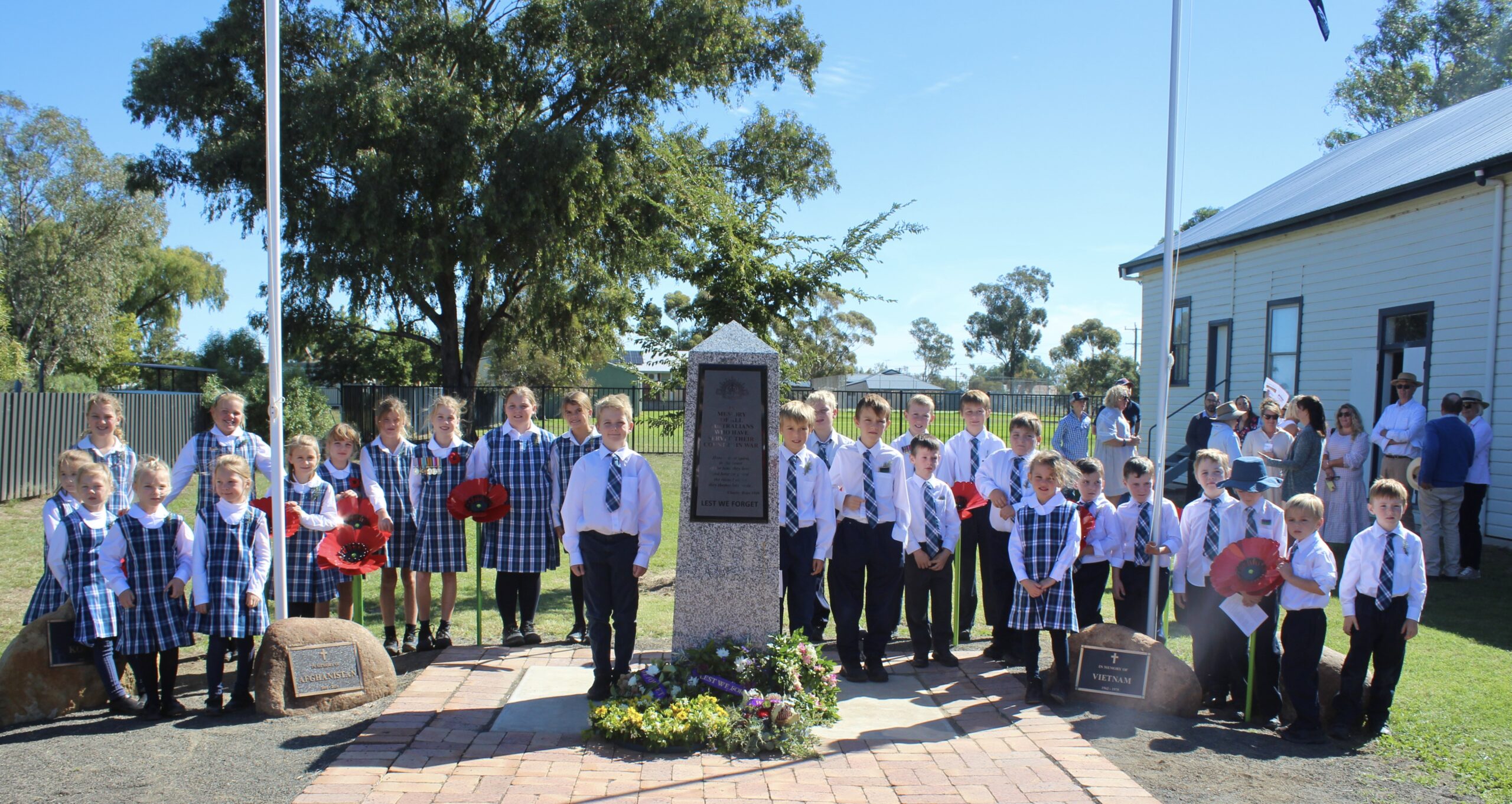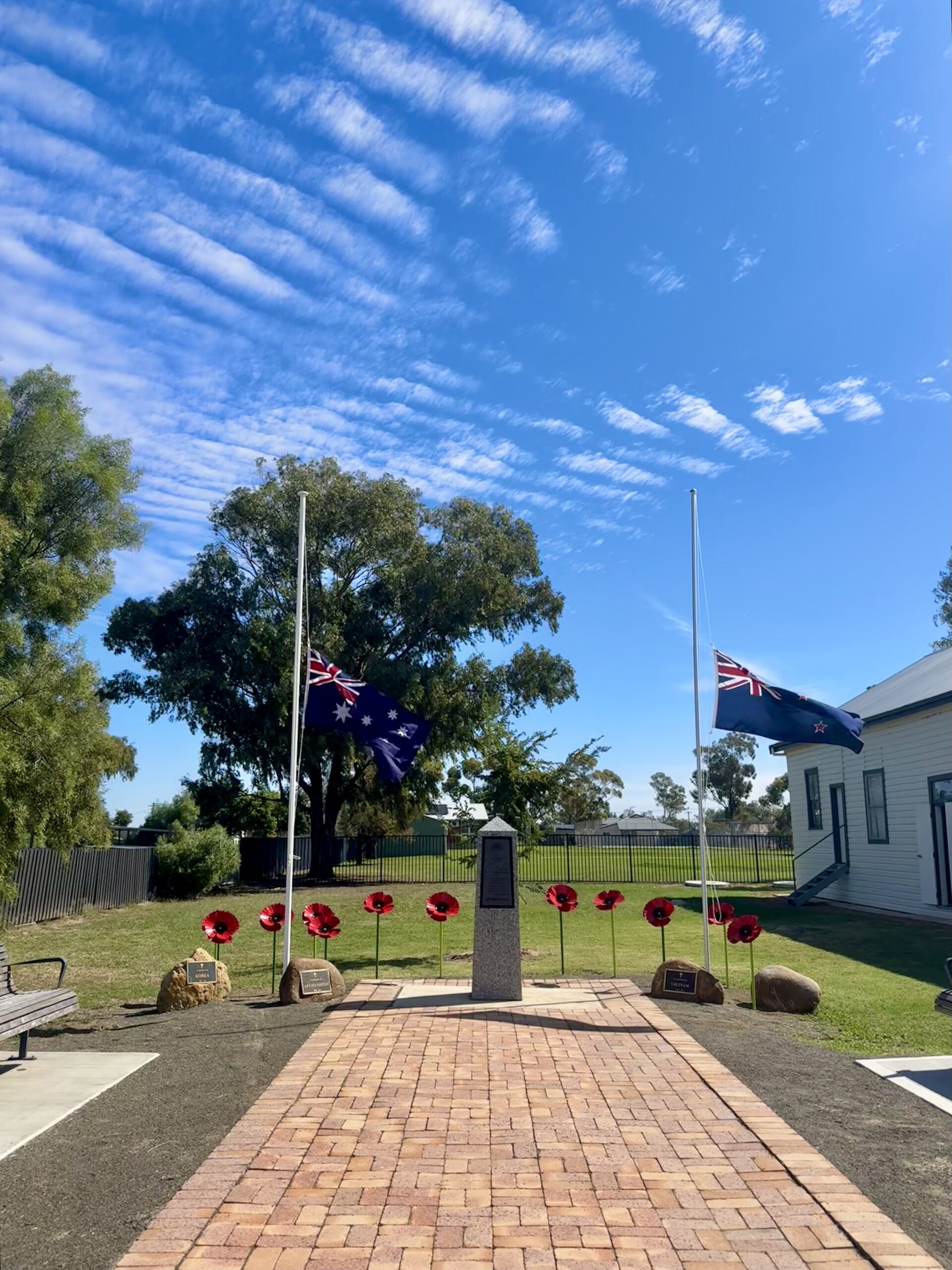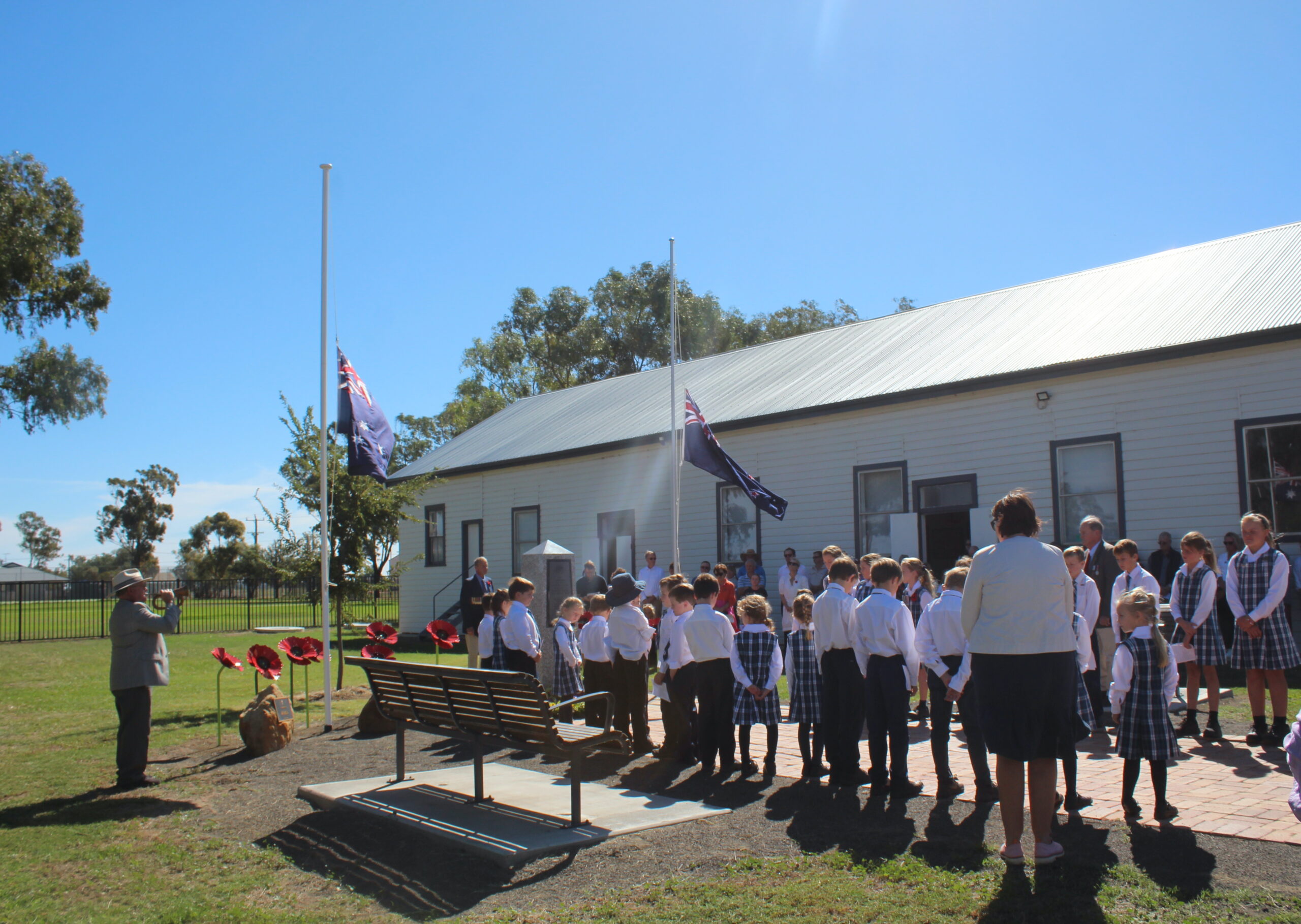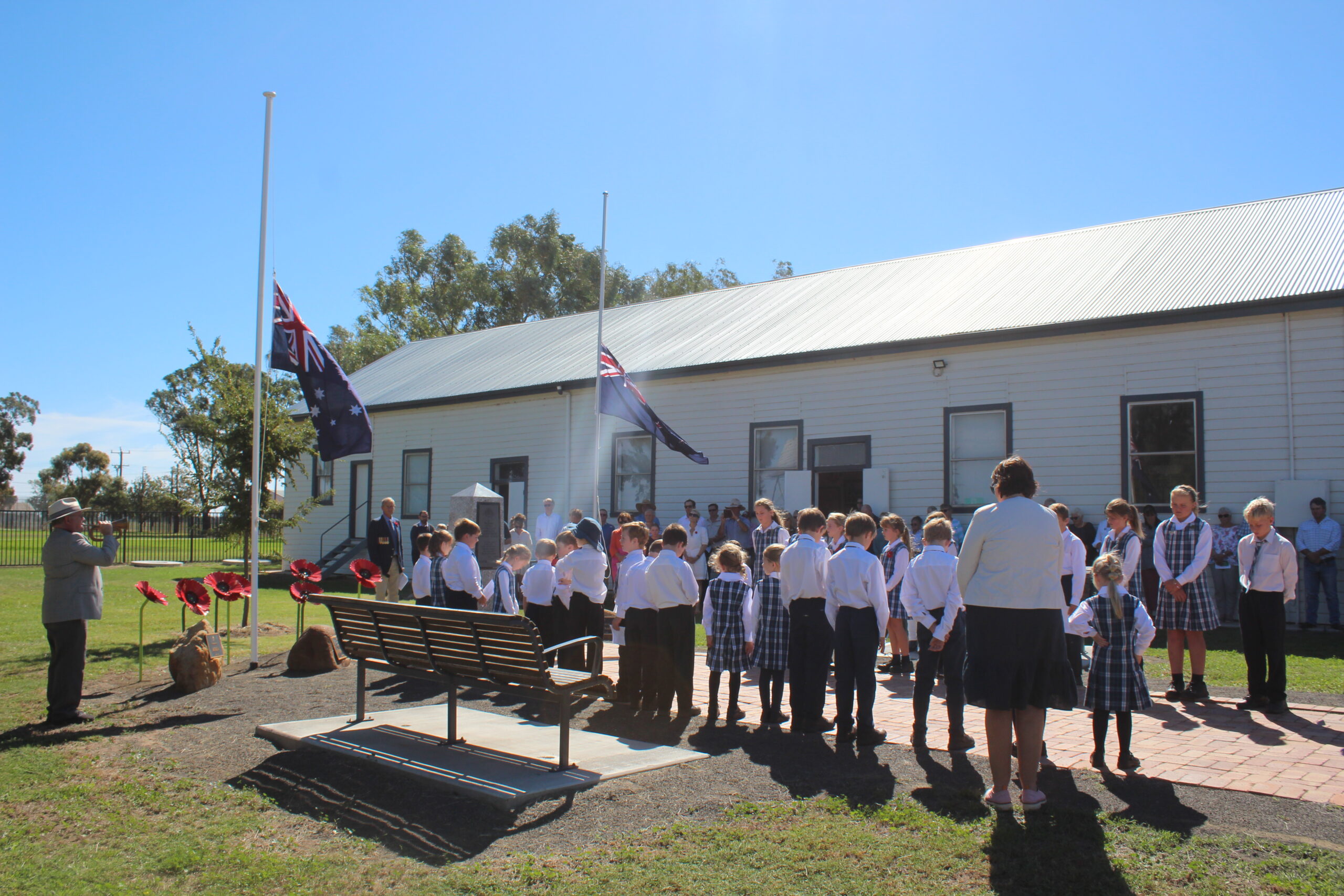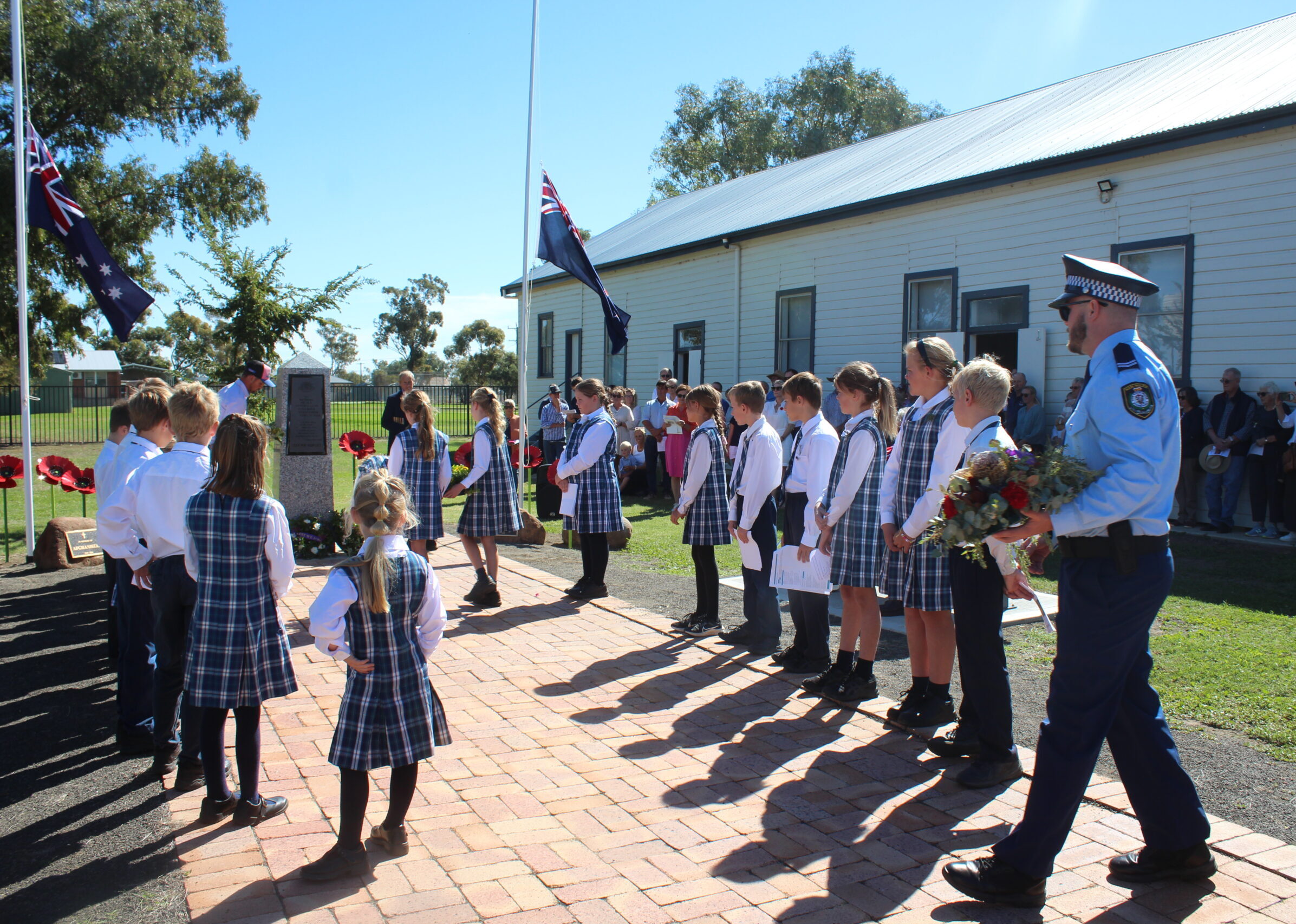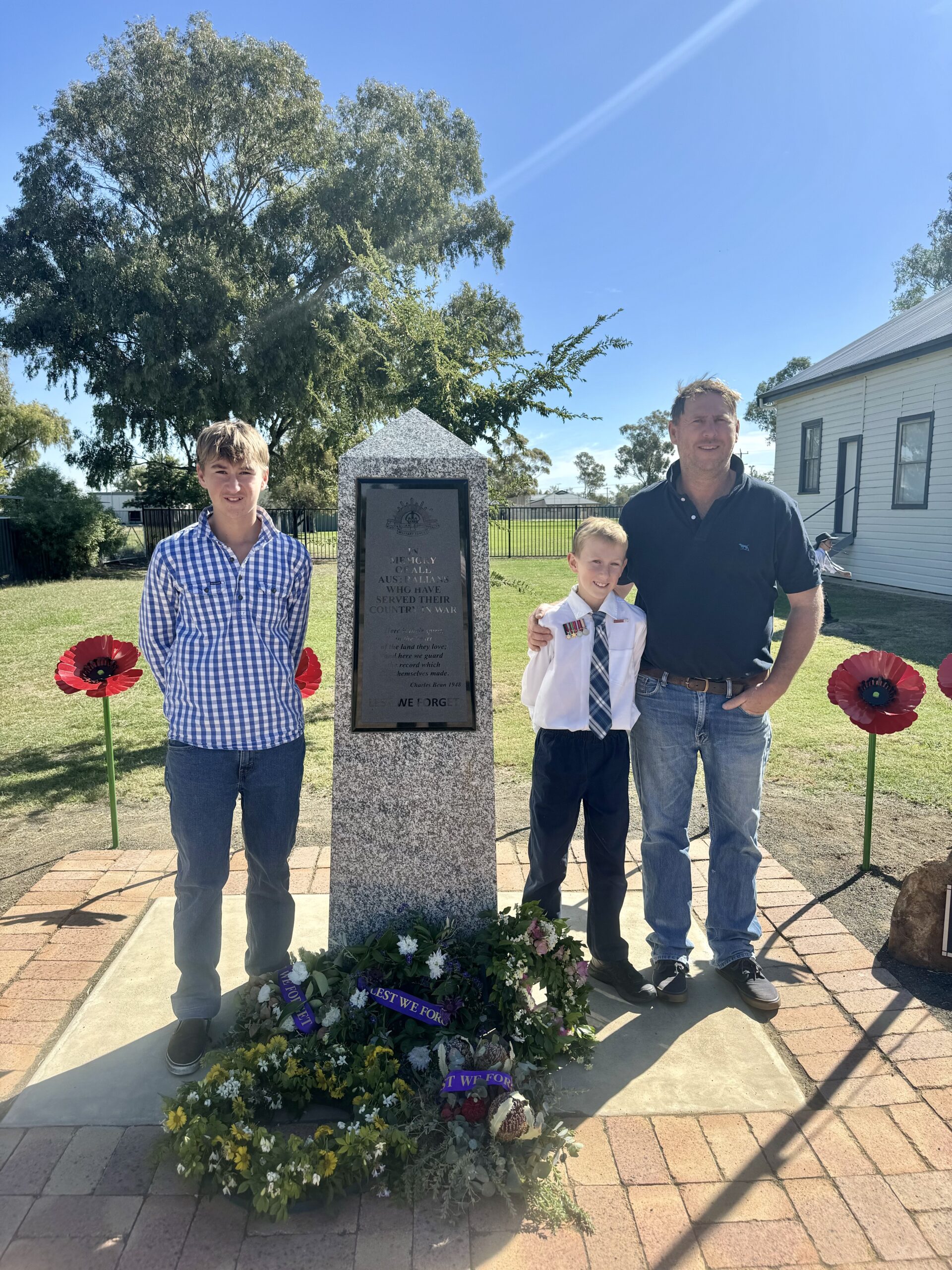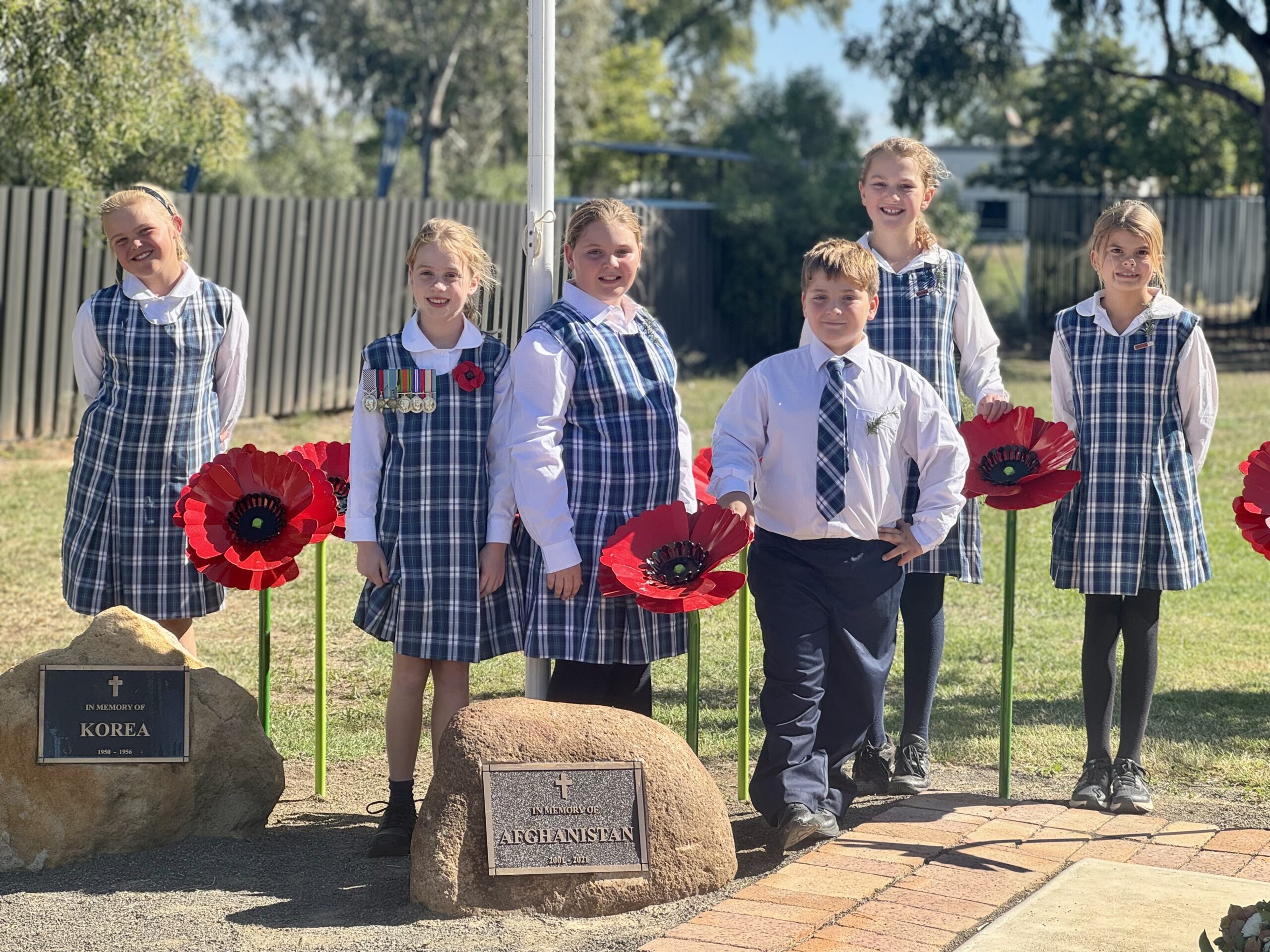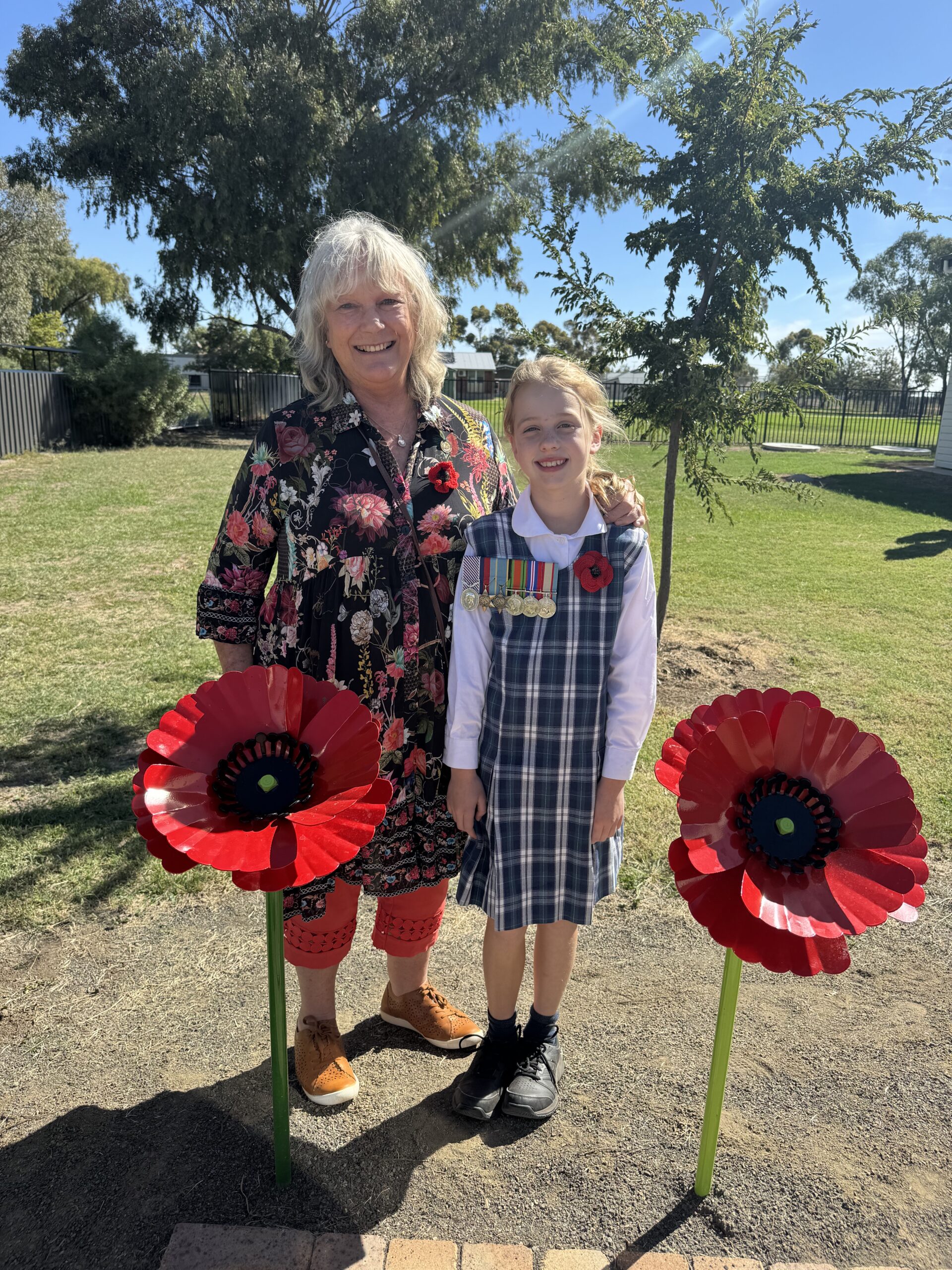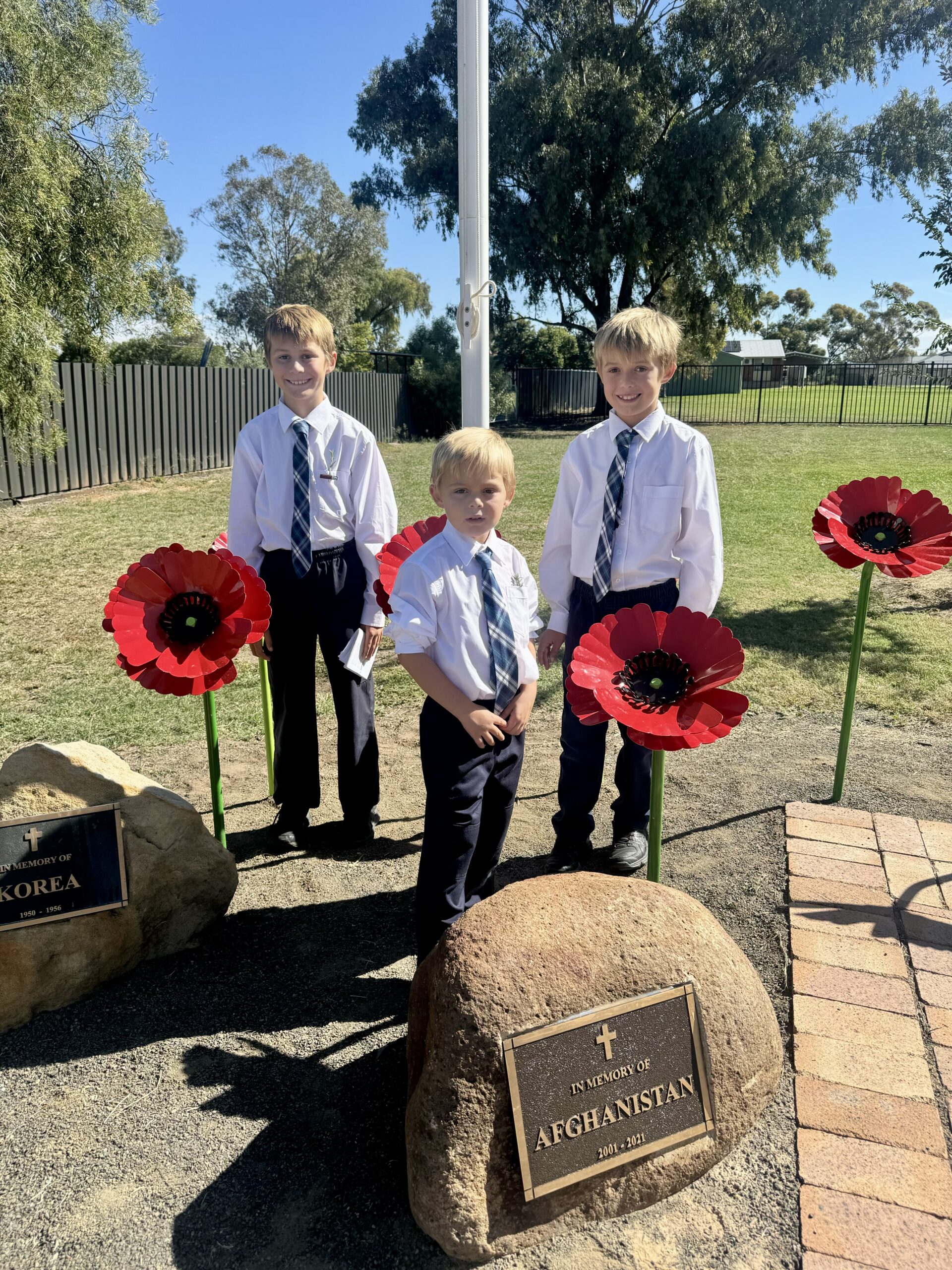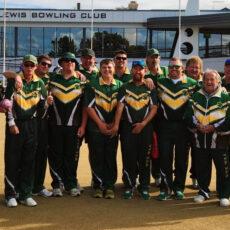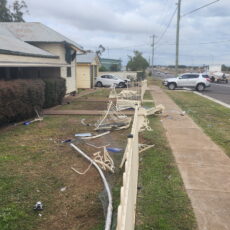The Burren Junction Anzac Day service had some bright and significant new additions this year: red remembrance poppies in the town’s war memorial garden.
Readers would recognise poppies as a symbol of commemoration, remembering those who died or suffered in wars, conflicts, and peacekeeping operations.
Worn by many at Remembrance Day and Anzac Day services in Australia, New Zealand and other Commonwealth countries, the poppy holds deep significance honouring the heroic spirit of those who served, their resilience and mateship as well as expressing a commitment to a peaceful future.
The story behind the poppy’s symbolism emerged during World War I in 1915, when the red flowers were among the first plants to bloom on the battlefields of northern France and Belgium, springing up from the devastated earth and creating a poignant contrast against the bleak backdrop of war. For observers, their scarlet petals echoed the bloodshed of war and the loss of lives.
“In soldiers’ folklore, the vivid red of the poppy came from the blood of their comrades soaking the ground,” states the Australian War Memorial’s website. And it soon became a symbol of “the sacrifice of shed blood”.
During WWI, much of the fighting took place in Western Europe where the countryside was blasted and bombed, little or nothing grew, but history records an abundance of striking red poppies in the fields of Flanders, the soil churned up by shelling and trenches, the resilient flowers flourishing amid the war and destruction.
The well-known poem ‘In Flanders Fields’ was written on the battlefield at Ypres in 1915 by Canadian Lieutenant Colonel John McCrae after his friend LT Alexis Helmer sadly died during the 2nd Battle of Ypres.
It’s believed he was so moved by the sight of the red poppies growing in the ravaged battlefield, and his powerful poetry inspired the use of the poppy as a symbol of remembrance.
‘In Flanders Fields’ reflects on the poppies growing on the graves of fallen soldiers, their sacrifice and calls on the living to continue their legacy by honouring their memory and carrying on their fight for peace.
The Australian Army’s website states people wear poppies: in memory of the sacred dead who rest in Flanders’ Fields; to keep alive the memories of the sacred cause for which they laid down their lives; and as a bond of esteem and affection between the soldiers of all Allied nations and in respect for France, our common battleground. Reports also detail Moina Michael, an American academic and teacher, read McCrae’s poem and was deeply touched, she wrote her own poem titled ‘We Shall Keep the Faith’ and became the first person to wear a red poppy as a personal commemoration, encouraging the sale of poppies to raise funds for veterans.
Frenchwoman Anna Guérin, known as the ‘Originator of the Poppy Day’, began selling artificial poppies in Britain in 1921 to support veterans and the families of those who had died during World War I.
As well as their enduring symbolism, today, poppies remain a part of fundraising campaigns to help service people and their families, including through the RSL’s work.
On Anzac Day this year, new pristine poppy replicas were standing tall in Burren’s beautiful war memorial garden: painted bright red, they were a standout tribute remembering the sacrifices made throughout our war history as the town’s future generation – students from the Burren Junction Public School – fittingly stood tall near the poppies, proudly dressed in their school uniforms, they lined the path creating a guard of
honour for the community’s wreath laying ceremony.
“We were absolutely delighted with the poppies, David and Natasha Johnston did a fabulous job making them,” said Elizabeth Powell.
“They’re made out of steel and powder coated.”
Burren Junction residents and active community members Elizabeth and Philip Powell spotted some similar remembrance poppy replicas when they were driving through the Queensland town of Yellabon.
“We had been on the hunt, and then one morning last year we were driving down the main street in Wee Waa
and saw the cotton bolls installed, so Philip asked David about the poppies.”
The Powells along with fellow hall committee members Coral and Philip Marshall, and Sandy and Lucinda Stump picked up the baton from the town’s RSL club to create the war memorial area – a local place for people to gather, reflect, remember, and honour those who serve and make sacrifices.
The War Memorial inscription reads: “Here is their spirit, in the heart of the land they loved; and here we guard the record which they themselves made.” Charles Bean, 1948.
The Burren Junction Hall Committee is well-known for its dogged and effective approach to successful project outcomes after rescuing the town’s much-loved hall and restoring it to the magnificent community meeting place and event venue that it is today.
The committee also worked with others to improve the commemorative area.
Restoring honour boards, hanging significant photos as a tribute to locals who have served, and creating a well-maintained and special garden area where rosemary is planted and both the Australian and New Zealand flags fly.
Next to Burren’s obelisk memorial, which honours all Australians who have served their country in war, now stand 12 poppy replicas and memorial rocks with plaques marking different conflicts of war.
“We felt it was very important to have something in Burren,” said Mrs Powell.
“Philip’s father served and he was living in Burren when he enlisted, Coral’s father was the same, Philip Marshall’s father served, my father served and so did Sandy’s – that contributed to the importance of doing something.
“The catalyst was that members of the RSL were raising money to make an outdoor memorial before the club was sold,” she explained.
“When the club was sold, they came to the hall committee and said they would like to donate some money towards a memorial, and asked if the committee would be interested in taking on the project.
“We have also applied for grants along the way.”Committee members as well as their families and other community volunteers, pitched in to complete the finishing touches before Anzac Day making the town’s march and service a special and brilliant bush tribute.
“We were happy with the service and particularly happy with the children’s involvement,” said Mrs Powell.
“It was school holidays and almost the whole school marched.
“The new principal (Sarokhan Malla) was there, and the new teachers helped organise the kids.”
Bugler Peter Carrett was praised for making the big effort to be part of the Burren service, having played at Wee Waa beforehand, along with those who stepped up to speaking duties, and school staff including former teacher Lucinda Stump. All attendees enjoyed lunch together after the Anzac Day ceremony thanks to the Burren Junction Progress Association.
IN FLANDERS FIELDS
By Canadian medical officer, Lieutenant-Colonel John McCrae, first published in the British Punch Magazine in December 1915.
In Flanders fields the poppies blow
Between the crosses, row on row,
That mark our place; and in the sky
The larks, still bravely singing, fly
Scarce heard amid- the guns below.
We are the Dead. Short days ago
We lived, felt dawn, saw sunsets glow,
Loved and were loved, and now we lie
In Flanders fields.
Take up our quarrel with the foe;
To you from failing hands, we throw
The torch; be yours to hold it high.
If ye break the faith with us who die
We shall not sleep, though poppies grow
In Flanders fields


